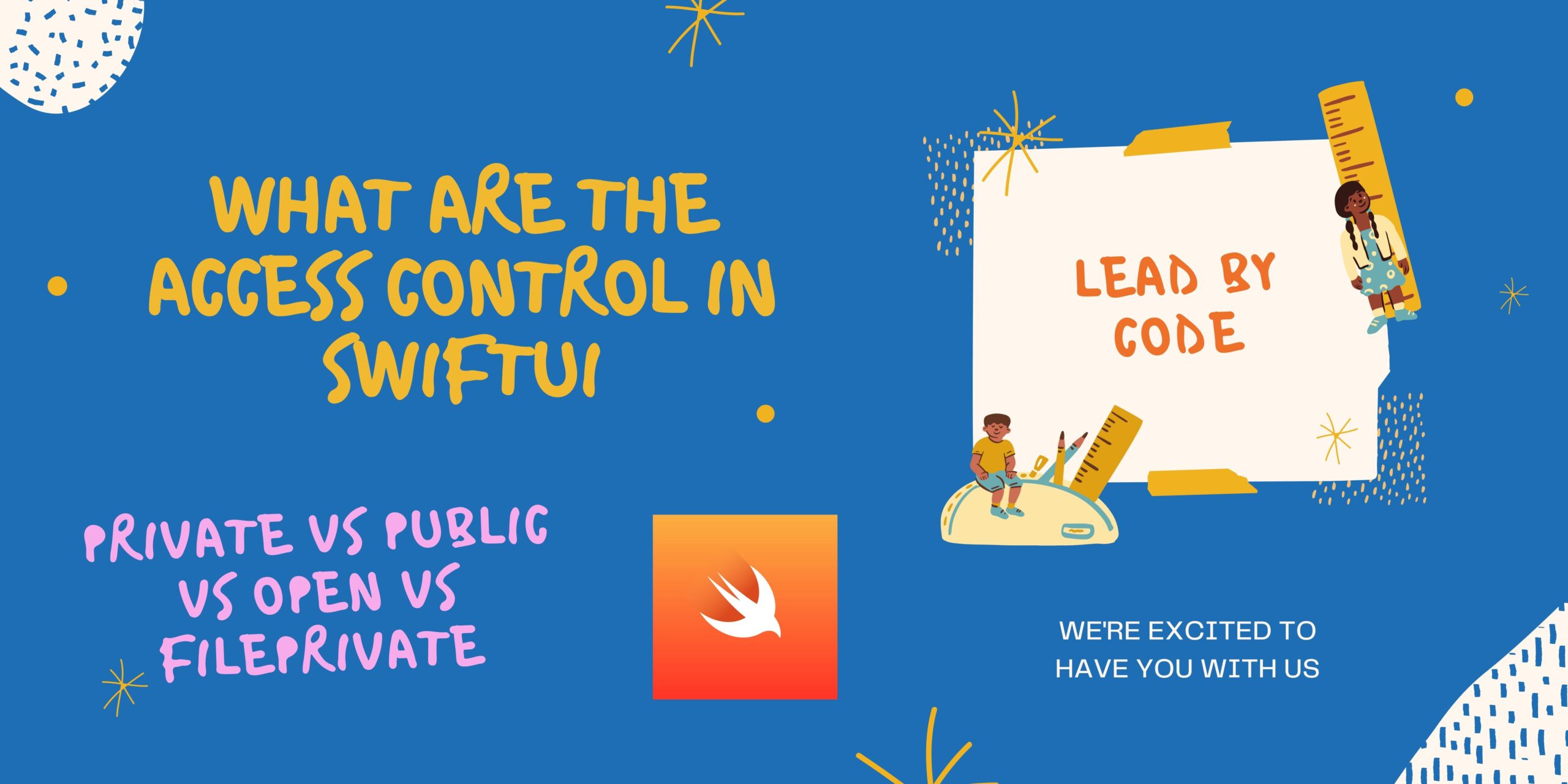What is swift access control?
Access control : As Define Access Control in Swift used to restrict the access the part of the code in other file or module. The feature of access control is to hide the detail code of the file or the module.
Swift 3 brought a very contradictory element to Access control – fileprivate access modifier which can be really confusing. We can assign specific access level for object types ( Struct, Class, Enum ) .We can also assign the specific controller for properties, method and subscription
Previously, private access level modifier was used to hide type members from other types and private members could only be accessed by methods and properties defined at type definition, leaving the same type extensions aside as they couldn’t access those members.
Access Control in Swift
Access Control in SwiftUI is used to restrict access to code entities such as classes, properties, methods, and variables, by defining the visibility of these entities to other parts of the application.
In Swift, there are five access levels, from the most restrictive to the least restrictive:
-
private: Limits the use of the entity to the same source file where it’s defined. -
fileprivate: Limits the use of the entity to the same Swift file where it’s defined. -
internal: Limits the use of the entity to the module where it’s defined. This is the default access level. -
public: Allows the use of the entity from any module that imports the module where it’s defined. -
open: Similar topublic, but allows subclassing and overriding of methods and properties.
fileprivate could be used to share access for type members, such as properties and methods, within the same file. In fact usage of private led to a problem when extensions on some type didn’t have access to members of that type, so using fileprivate in under such circumstances was a very common solution, which has led to another the problem: other types in the same file could access those members too.
Swift 4 puts things in order by allowing extensions on the type to access private members of that type in the same fil
In which Open is least restricted and private is most restricted controller
Access control code swift
We Will learn in brief about the control used in Swift
Open
Open is the least restricted controller . the object or the function in this controller can be easily access by the other controller. Using Open in the controller we can enable the use of object or entity outside the module or framework.
iOS uses the UIKIT as we import UIKit in the class we can access the UIButon, UIView and UILabel in the specific file.
Public
Public is similar like open. but specific function of public is that we can override the subclass form the module were it is defined .
Internal
Internal is used to access the entity within the module or within the source file. once internal is declared we cannot access it outside the module.
swift fileprivate
FilePrivate is used to access the object or the entity inside the swift file declared using the fileprivate we can access the function or the object within the specific swift file
Private is the most restricted Access specifier . Object or entity declared can be access into the specific class or model . basically we can access the entity within the braces of the class or structure.
